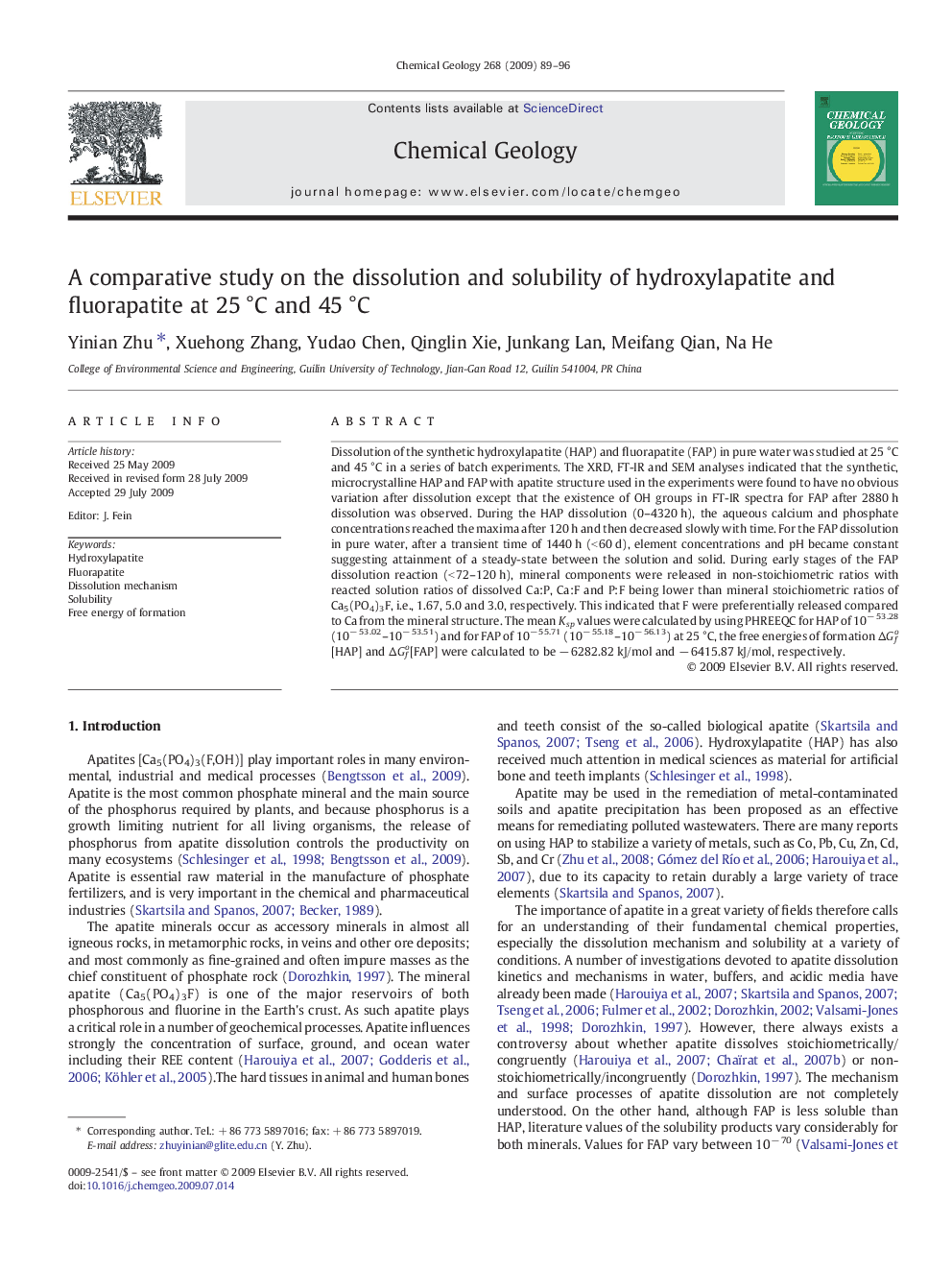| Article ID | Journal | Published Year | Pages | File Type |
|---|---|---|---|---|
| 4700267 | Chemical Geology | 2009 | 8 Pages |
Dissolution of the synthetic hydroxylapatite (HAP) and fluorapatite (FAP) in pure water was studied at 25 °C and 45 °C in a series of batch experiments. The XRD, FT-IR and SEM analyses indicated that the synthetic, microcrystalline HAP and FAP with apatite structure used in the experiments were found to have no obvious variation after dissolution except that the existence of OH groups in FT-IR spectra for FAP after 2880 h dissolution was observed. During the HAP dissolution (0–4320 h), the aqueous calcium and phosphate concentrations reached the maxima after 120 h and then decreased slowly with time. For the FAP dissolution in pure water, after a transient time of 1440 h (< 60 d), element concentrations and pH became constant suggesting attainment of a steady-state between the solution and solid. During early stages of the FAP dissolution reaction (< 72–120 h), mineral components were released in non-stoichiometric ratios with reacted solution ratios of dissolved Ca:P, Ca:F and P:F being lower than mineral stoichiometric ratios of Ca5(PO4)3F, i.e., 1.67, 5.0 and 3.0, respectively. This indicated that F were preferentially released compared to Ca from the mineral structure. The mean Ksp values were calculated by using PHREEQC for HAP of 10− 53.28 (10− 53.02–10− 53.51) and for FAP of 10− 55.71 (10− 55.18–10− 56.13) at 25 °C, the free energies of formation ΔGfo[HAP] and ΔGfo[FAP] were calculated to be − 6282.82 kJ/mol and − 6415.87 kJ/mol, respectively.
